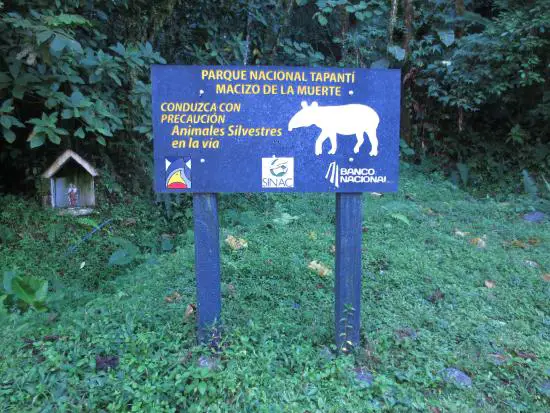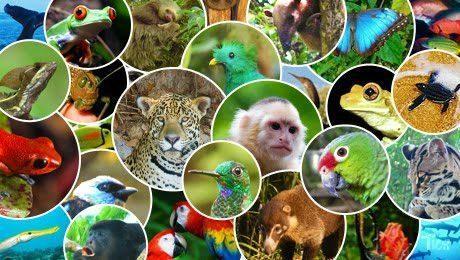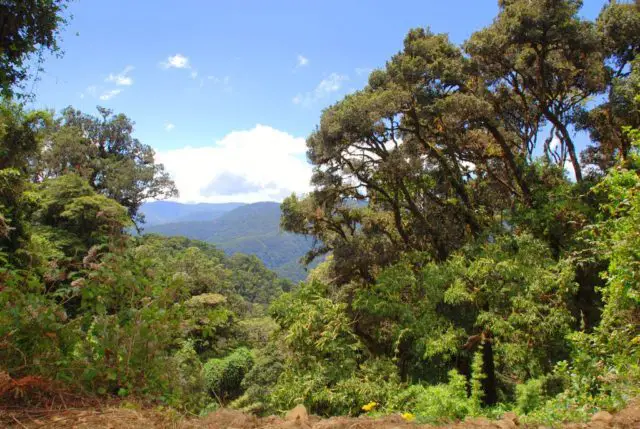The Tapantí National Park is a nature reserve that is located in the La Amistad Conservation Area, in conjunction with the Massif de la Muerte, Northeast of the Talamanca Mountain Range, in the south-central part of our country. Located about 15 kilometers Southeast of the town of Orosí and was created in 1982. This park covers an area of about 58,323 hectares, making it one of the largest in the country. It includes parts of the Carthaginian cantons of Cartago, El Guarco, Jiménez, and Paraíso, and protects the river basin of the Grande de Orosí.

What you should know…
The park is a crucial wildlife refuge, and especially for birds, thus becoming a true sanctuary for amateur ornithologists. A paradise for bird watchers with hundreds of different species of birds living in the dense foliage of the area and about half of those specimens are unique in the area. The park is also an essential wetland with more than 150 rivers and waterfalls that flow through the area. The most important body of water is the Orosí River that runs through the middle of the park. This river is not only of great contribution to the marine life in the area, but it is also important for the hydroelectric energy system.
The park manages to cover a wide variety of biodiversity in a small space thanks to the isolation of the area and the variety of heights that the land presents. In its flora, you can see different types of forest from the montane to the pre-montane rain forest. The tree species are fig trees, oaks, and male nance, among others. The group of epiphytes can be found represented by ferns, bromeliads, and orchids. With regards to fauna, there are 45 species of mammals, 300 bird species, 32 species of amphibians, and others. Among the birds, you can find there are yigüirros, oropéndolas, guans, quetzals, and sparrowhawks. There also are, from the group of mammals, bats, raccoons, monkeys, squirrels, and several species of felines, the largest species of mammals is the Mesoamerican tapir.

The dry season is the time of the year to visit this area for the best experience, but we must bear in mind that here it can rain throughout the year. When visiting we have to take warm clothes and garments for the rain. Also, use good specific hiking shoes and prepare enough supplies for your stay, as the terrain changes as we trek along and enter the different inner roads. You have to be careful when walking and try to stay on the marked trails. The changing geological characteristics can cause landslides and constantly modify the terrain, so be alert.
What can we do?
Upon arrival, we can visit a little information center at the entrance of the park. There we will be able to know important details about the area and look for recent warnings published by park rangers. The marked hiking routes facilitate the mobilization on foot through the tropical forest. The longest road is about 4 kilometers long. Always stay on the marked trails to avoid getting lost. We can rent a kayak for the day and go along the river. You can also swim, take a refreshing dip in good weather and buy a fishing permit for the months of April thru October to fish in the rivers and streams of the area.
Camping is not allowed inside the boundaries of the park, but La Esperanza Biological Station in El Guarco has enough space for up to 15 people. The facilities include running water, electricity, and showers. “InBios” manages the station and you need to reserve in advance if you plan to stay inside the park. Hotels and other lodging options are available outside the park limits.

The park has other daytime facilities that include picnic areas and a gazebo. It takes approximately 30 minutes to reach the park entrance from Orosí. If we travel by bus from San José, you have to take the route to Cartago, then change bus and take the line Orosí to Río Macho. The total journey can be up to 3 hours in total traveling by public transport.
Many visitors enjoy the great diversity of flora and fauna, although the greatest attraction is the variety of tropical birds that inhabit the area. We may need help to detect some of the wildlife in the area. The dense foliage provides many natural hiding places, and an experienced guide will show us exactly where to look. Researchers have cataloged the diversity of the park into 260 bird species, 45 different species of mammals, 20 reptile species, and 28 amphibian species.
Bird lovers should look for the beautiful quetzal, hummingbirds, parakeets, and finches. It is also known that some birds of prey frequent the area, and it is possible that you can see eagles or hawks. Larger mammals roam freely in these forests. The white-tailed deer is common, but it is also possible to see the tapir, ocelots, and howler monkeys. The rivers and wetland areas are full of trout, exotic reptiles, and several species of amphibians.

